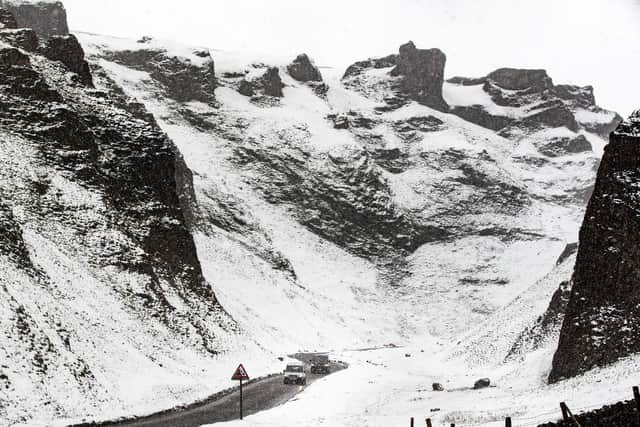The strange weather phenomenon you may have heard as snow fell in Sheffield last night


Some parts of Sheffield woke up to a blanket of snow yesterday morning with winds of up to 65mph sweeping across parts of England.
Many people in Sheffield were kept awake by the unusual weather last night; hearing strong winds and even seeing ‘flashing lights’ as more snow fell.
Advertisement
Hide AdAdvertisement
Hide Ad

It turns out, that Sheffield experienced a very rare and unusual weather phenomenon last night – thundersnow.
What is thundersnow?
It’s largely as the name suggests; snow accompanied by thunder and lightening. It is the winter equivalent of a summer thunderstorm and can be more atmospheric.
When do we get it?
Thundersnow, which can lead to a heavy downpour of snow, only forms in wintry conditions when warm air under a layer of cold air wants to rise.
Nicola Maxey, a spokeswoman for the Met Office, explains: “There is an updraught of warm air which moves up into the cold air. You get instability and the development of cumulonimbus clouds, the big towering clouds you get with thunderstorms.
Advertisement
Hide AdAdvertisement
Hide Ad“There is an electrical discharge in the atmosphere and that’s how you get flashes of lightning which leads to thunder, which are trembling sound waves.”
In the summer these conditions would lead to a thunderstorm but if they occur in the winter, when we have snow instead of rain, we get thundersnow.
What does it look and sound like?
Thundersnow is an interesting phenomenon.
Lightning looks brighter with nighttime thundersnow because the light reflects off the snowflakes.
But the sound of thunder is less intense because the snow dampens it.
The Met Office says thunder can usually be heard from many miles away but only people in a two to three mile radius of lightning are likely to hear the thunder during thundersnow.